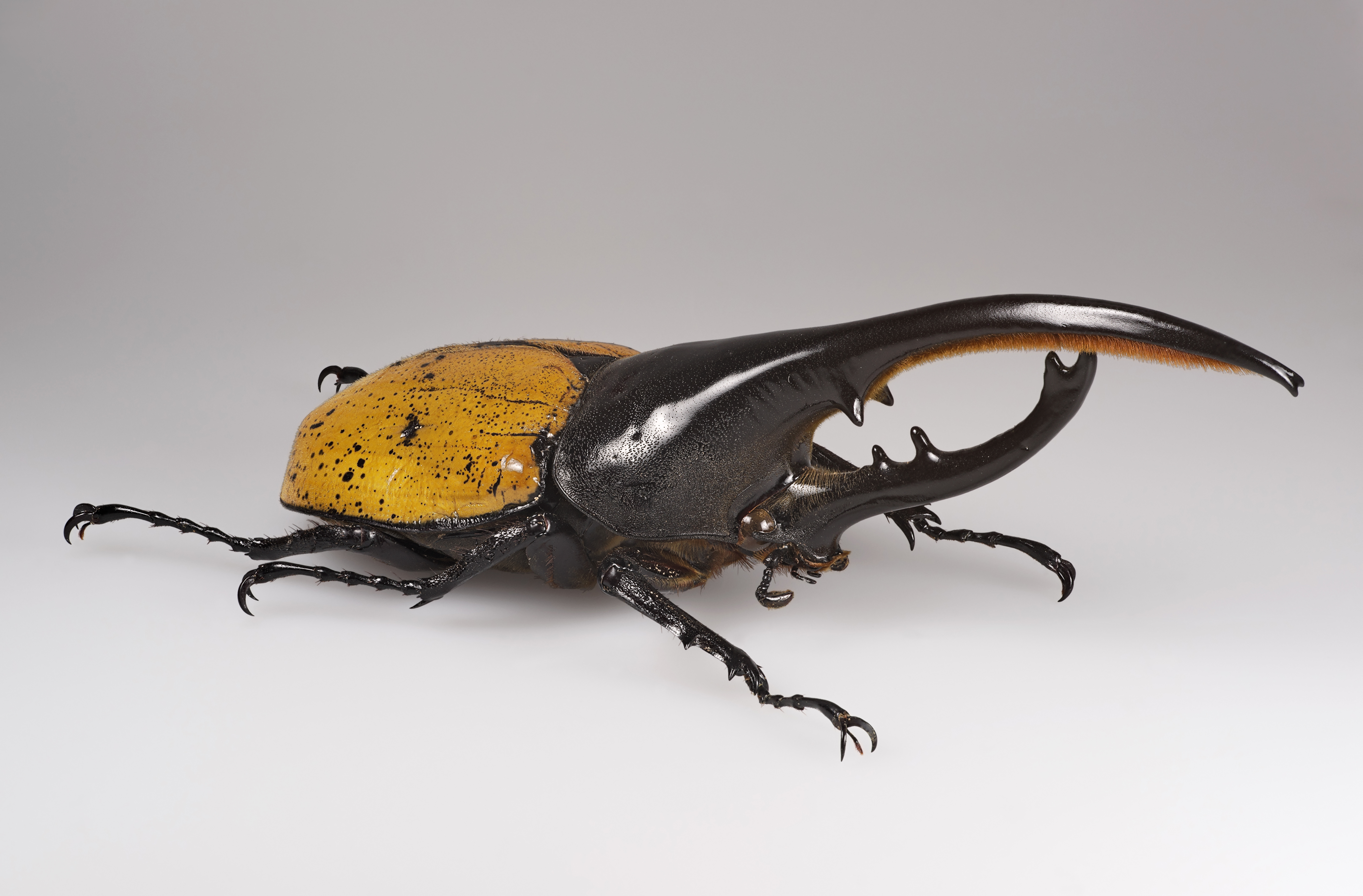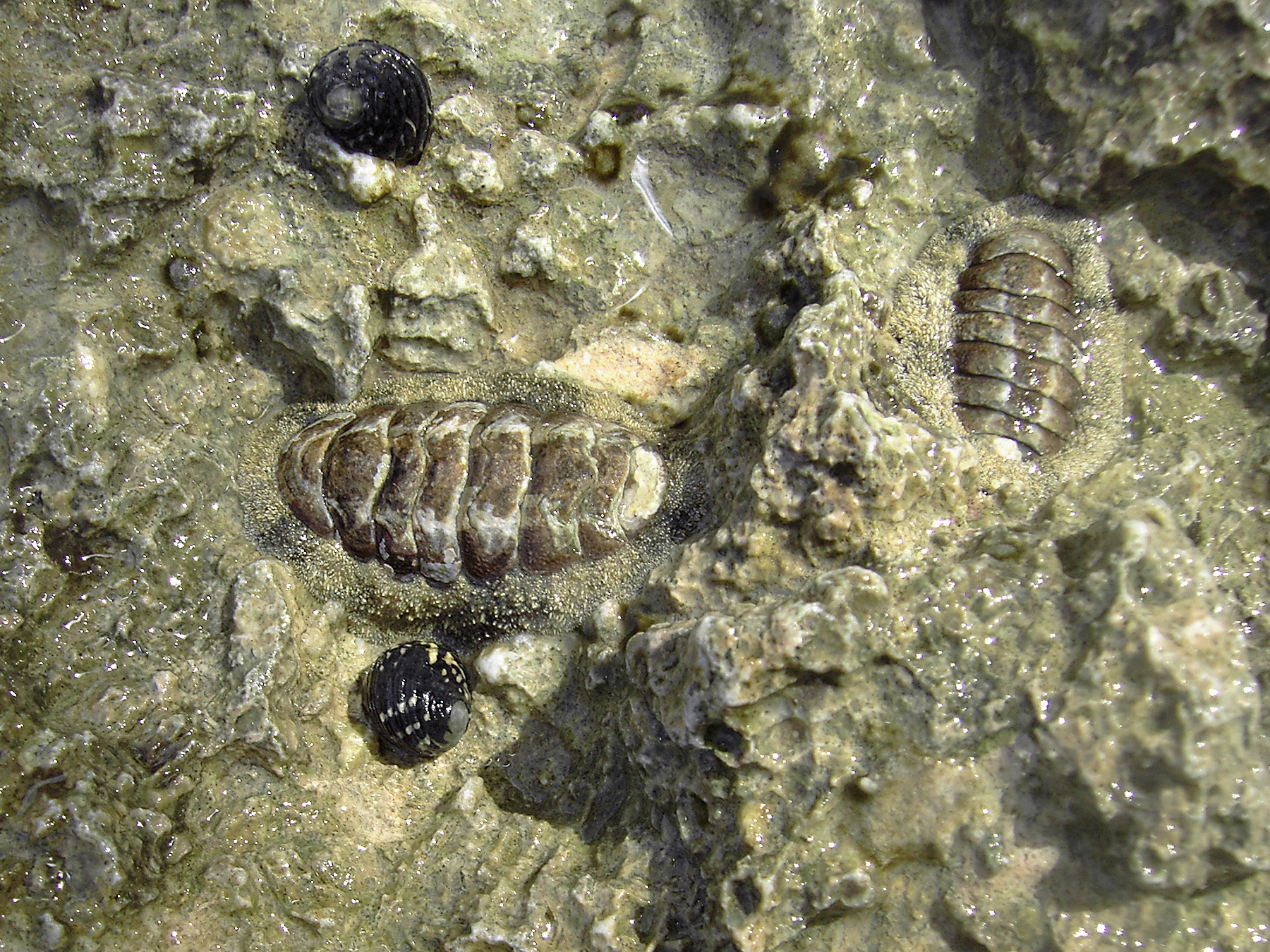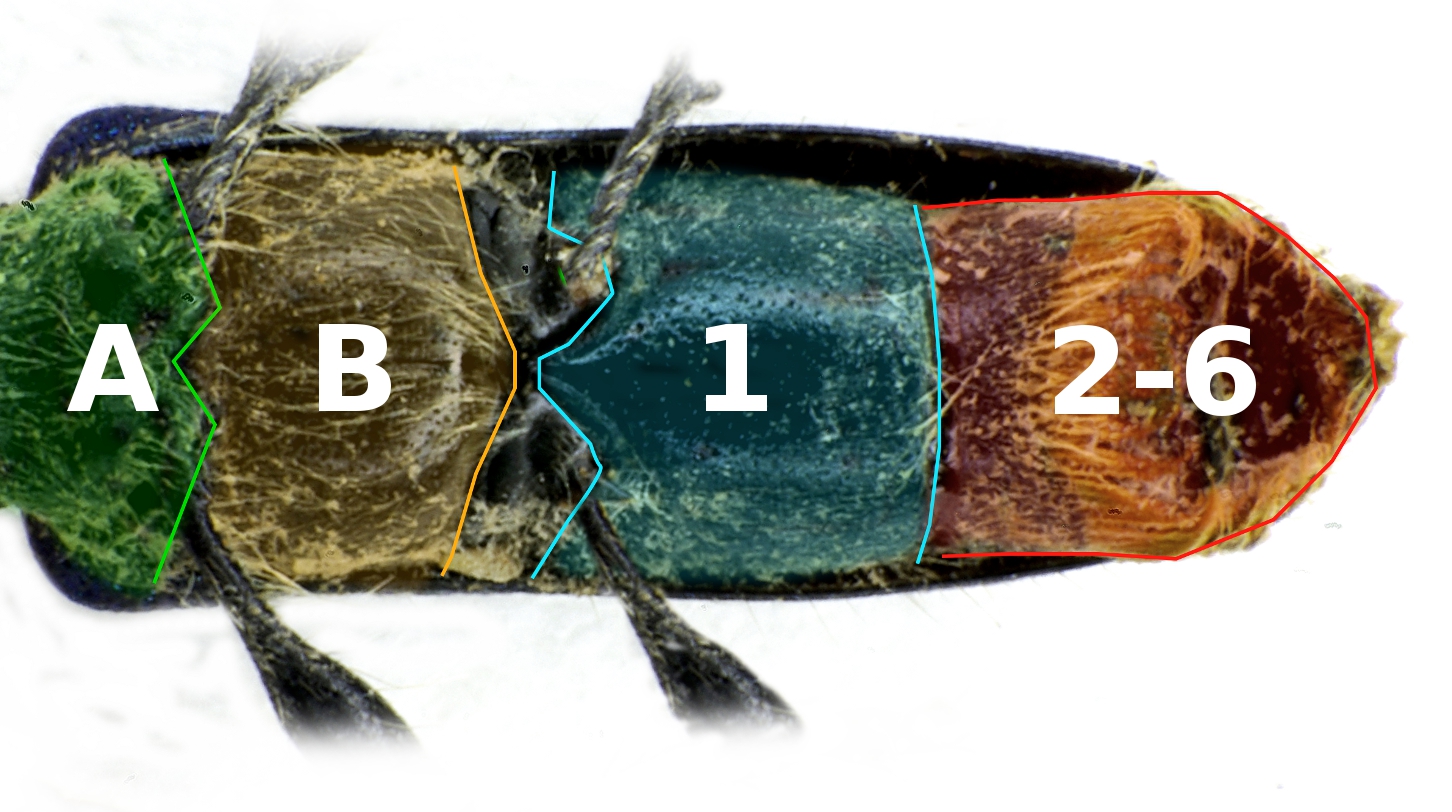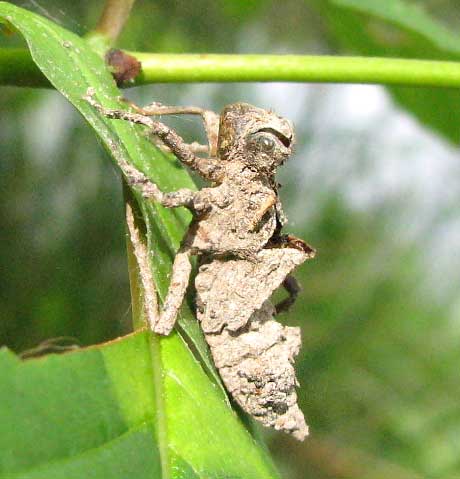|
Sclerites
A sclerite (Greek , ', meaning " hard") is a hardened body part. In various branches of biology the term is applied to various structures, but not as a rule to vertebrate anatomical features such as bones and teeth. Instead it refers most commonly to the hardened parts of arthropod exoskeletons and the internal spicules of invertebrates such as certain sponges and soft corals. In paleontology, a scleritome is the complete set of sclerites of an organism, often all that is known from fossil invertebrates. Sclerites in combination Sclerites may occur practically isolated in an organism, such as the sting of a cone shell. Also, they can be more or less scattered, such as tufts of defensive sharp, mineralised bristles as in many marine Polychaetes. Or, they can occur as structured, but unconnected or loosely connected arrays, such as the mineral "teeth" in the radula of many Mollusca, the valves of Chitons, the beak of Cephalopod, or the articulated exoskeletons of Arthropoda. When ... [...More Info...] [...Related Items...] OR: [Wikipedia] [Google] [Baidu] |
Sponges
Sponges, the members of the phylum Porifera (; meaning 'pore bearer'), are a basal animal clade as a sister of the diploblasts. They are multicellular organisms that have bodies full of pores and channels allowing water to circulate through them, consisting of jelly-like mesohyl sandwiched between two thin layers of cells. Sponges have unspecialized cells that can transform into other types and that often migrate between the main cell layers and the mesohyl in the process. Sponges do not have nervous, digestive or circulatory systems. Instead, most rely on maintaining a constant water flow through their bodies to obtain food and oxygen and to remove wastes. Sponges were first to branch off the evolutionary tree from the last common ancestor of all animals, making them the sister group of all other animals. Etymology The term ''sponge'' derives from the Ancient Greek word ( 'sponge'). Overview Sponges are similar to other animals in that they are multicellula ... [...More Info...] [...Related Items...] OR: [Wikipedia] [Google] [Baidu] |
Exocuticle
The cuticle forms the major part of the integument of the Arthropoda. It includes most of the material of the exoskeleton of the insects, Crustacea, Arachnida, and Myriapoda. Morphology In arthropods, the integument, the external "skin", or "shell", is the product of a single layer of ectodermal epithelium. That layer is attached to the external or distal surface of the deepest layer, the non-cellular internal membrane of the integument. That non-cellular membrane is called the basement membrane. The layer of epithelium on the basement membrane produces the cuticle, which begins as a tough, flexible layer of chitin. Such thin, flexible chitin is the major structural part of the integument where flexibility is necessary, such as in bodily parts that must stretch to contain accumulated liquids, or that form joints between rigid parts of the exoskeleton. In other parts of the cuticle the function of the integument demands more rigid materials, such as armoured regions or the biti ... [...More Info...] [...Related Items...] OR: [Wikipedia] [Google] [Baidu] |
Chiton
Chitons () are marine molluscs of varying size in the class Polyplacophora (), formerly known as Amphineura. About 940 extant and 430 fossil species are recognized. They are also sometimes known as gumboots or sea cradles or coat-of-mail shells or suck-rocks, or more formally as loricates, polyplacophorans, and occasionally as polyplacophores. Chitons have a shell composed of eight separate shell plates or valves. These plates overlap slightly at the front and back edges, and yet articulate well with one another. Because of this, the shell provides protection at the same time as permitting the chiton to flex upward when needed for locomotion over uneven surfaces, and even allows the animal to curl up into a ball when dislodged from rocks. The shell plates are encircled by a skirt known as a girdle. Habitat Chitons live worldwide, from cold waters through to the tropics. They live on hard surfaces, such as on or under rocks, or in rock crevices. Some species live quite h ... [...More Info...] [...Related Items...] OR: [Wikipedia] [Google] [Baidu] |
Tergum
A ''tergum'' (Latin for "the back"; plural ''terga'', associated adjective tergal) is the dorsal ('upper') portion of an arthropod segment other than the head. The anterior edge is called the 'base' and posterior edge is called the 'apex' or 'margin'. A given tergum may be divided into hardened plates or sclerites commonly referred to as tergites. In a thoracic segment, for example, the tergum may be divided into an anterior notum and a posterior scutellum. Lateral extensions of a tergite are known as paranota (Greek for "alongside the back") or ''carinae'' (Latin for "keel"), exemplified by the flat-backed millipedes of the order Polydesmida. Kinorhynchs have tergal and sternal plates too, though seemingly not homologous with those of arthropods. Tergo-tergal is a stridulatory mechanism in which fine spines of the abdominal tergites are rubbed together to produce sound. This process is known as abdominal telescoping. Examples File:Andrena spiraeana abdomen.jpg , Abdom ... [...More Info...] [...Related Items...] OR: [Wikipedia] [Google] [Baidu] |
Sternum (arthropod Anatomy)
The sternum (pl. "sterna") is the ventral portion of a segment of an arthropod thorax or abdomen. In insects, the sterna are usually single, large sclerites, and external. However, they can sometimes be divided in two or more, in which case the subunits are called sternites, and may also be modified on the terminal abdominal segments so as to form part of the functional genitalia, in which case they are frequently reduced in size and development, and may become internalized and/or membranous. For a detailed explanation of the terminology, see Kinorhynchs have tergal and sternal plates too, though seemingly not homologous with those of arthropods.Sørensen, M. V. et al. Phylogeny of Kinorhyncha based on morphology and two molecular loci. PLoS One 10, 1–33 (2015). Ventrites are externally visible sternites. Usually the first sternite is covered up, so that vertrite numbers do not correspond to sternid numbers. The term is also used in other arthropod groups such as crustacea ... [...More Info...] [...Related Items...] OR: [Wikipedia] [Google] [Baidu] |
Alcyonacea
Alcyonacea, or soft corals, are an order of corals. In addition to the fleshy soft corals, the order Alcyonacea now contains all species previously known as "gorgonian corals", that produce a more or less hard skeleton, though quite different from "true" corals ( Scleractinia). These can be found in suborders Holaxonia, Scleraxonia, and Stolonifera. They are sessile colonial cnidarians that are found throughout the oceans of the world, especially in the deep sea, polar waters, tropics and subtropics. Common names for subsets of this order are sea fans and sea whips; others are similar to the sea pens of related order Pennatulacea. Individual tiny polyps form colonies that are normally erect, flattened, branching, and reminiscent of a fan. Others may be whiplike, bushy, or even encrusting. A colony can be several feet high and across, but only a few inches thick. They may be brightly coloured, often purple, red, or yellow. Photosynthetic gorgonians can be successfully kep ... [...More Info...] [...Related Items...] OR: [Wikipedia] [Google] [Baidu] |
Exoskeleton
An exoskeleton (from Greek ''éxō'' "outer" and ''skeletós'' "skeleton") is an external skeleton that supports and protects an animal's body, in contrast to an internal skeleton ( endoskeleton) in for example, a human. In usage, some of the larger kinds of exoskeletons are known as " shells". Examples of exoskeletons within animals include the arthropod exoskeleton shared by chelicerates, myriapods, crustaceans, and insects, as well as the shell of certain sponges and the mollusc shell shared by snails, clams, tusk shells, chitons and nautilus. Some animals, such as the turtle, have both an endoskeleton and an exoskeleton. Role Exoskeletons contain rigid and resistant components that fulfill a set of functional roles in many animals including protection, excretion, sensing, support, feeding and acting as a barrier against desiccation in terrestrial organisms. Exoskeletons have a role in defense from pests and predators, support and in providing an attachment framewo ... [...More Info...] [...Related Items...] OR: [Wikipedia] [Google] [Baidu] |
Phylum
In biology, a phylum (; plural: phyla) is a level of classification or taxonomic rank below kingdom and above class. Traditionally, in botany the term division has been used instead of phylum, although the International Code of Nomenclature for algae, fungi, and plants accepts the terms as equivalent. Depending on definitions, the animal kingdom Animalia contains about 31 phyla, the plant kingdom Plantae contains about 14 phyla, and the fungus kingdom Fungi contains about 8 phyla. Current research in phylogenetics is uncovering the relationships between phyla, which are contained in larger clades, like Ecdysozoa and Embryophyta. General description The term phylum was coined in 1866 by Ernst Haeckel from the Greek (, "race, stock"), related to (, "tribe, clan"). Haeckel noted that species constantly evolved into new species that seemed to retain few consistent features among themselves and therefore few features that distinguished them as a group ("a self-contain ... [...More Info...] [...Related Items...] OR: [Wikipedia] [Google] [Baidu] |
Journal
A journal, from the Old French ''journal'' (meaning "daily"), may refer to: * Bullet journal, a method of personal organization *Diary, a record of what happened over the course of a day or other period *Daybook, also known as a general journal, a daily record of financial transactions *Logbook, a record of events important to the operation of a vehicle, facility, or otherwise * Record (other) * Transaction log, a chronological record of data processing * Travel journal In publishing, ''journal'' can refer to various periodicals or serials: *Academic journal, an academic or scholarly periodical **Scientific journal, an academic journal focusing on science ** Medical journal, an academic journal focusing on medicine **Law review, a professional journal focusing on legal interpretation * Magazine, non-academic or scholarly periodicals in general **Trade magazine, a magazine of interest to those of a particular profession or trade **Literary magazine, a magazine devoted to l ... [...More Info...] [...Related Items...] OR: [Wikipedia] [Google] [Baidu] |
Pleuron (insect Anatomy)
The pleuron (pl. pleura, from Greek side, rib) is a lateral sclerite of thoracic segment of an insect between the tergum and the sternum. The terms pro-, meso Meso or mesos may refer to: * Apache Mesos, a computer clustering management platform * Meso, in-game currency for the massively multiplayer online role-playing game '' MapleStory'' * Meso compound, a stereochemical classification in chemistry * ...- and metapleuron are used respectively for the pleura of the first, second and third thoracic segments. References Insect anatomy Thorax (human anatomy) {{Insect-anatomy-stub ... [...More Info...] [...Related Items...] OR: [Wikipedia] [Google] [Baidu] |







